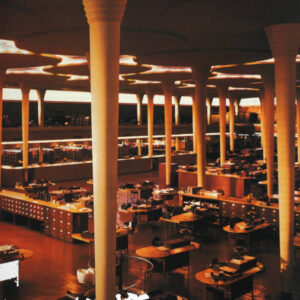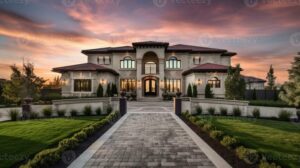
Kicking off with suburban growth real estate, this phenomenon is reshaping the landscape of the housing market as more individuals and families are seeking a balance between urban conveniences and suburban tranquility. The rise of remote work, coupled with a desire for larger living spaces, has propelled demand for suburban properties, making it a hot topic for both homebuyers and investors alike.
As we delve deeper into the dynamics of suburban growth, we will explore various trends, investment strategies, and the influence of technology on living experiences. From smart home innovations to the evolution of luxury homes, the suburban real estate sector is thriving and adapting to contemporary needs, making it an exciting area to watch.
Suburban Growth Trends
As urban areas continue to grapple with congestion and high living costs, many individuals and families are gravitating towards suburban living. This shift is not merely a trend; it reflects significant changes in lifestyle, work habits, and housing preferences. Understanding the forces behind suburban growth provides a clearer picture of the evolving real estate landscape.
Factors Contributing to Suburban Growth
Several key factors are driving the growth of suburban real estate. The desire for larger living spaces, access to quality schools, and a more tranquil environment are among the primary reasons people are choosing the suburbs over urban centers. Additionally, the COVID-19 pandemic accelerated trends such as remote work, allowing individuals more flexibility in their housing choices. Statistics from the U.S.
Census Bureau indicate that suburban areas experienced a population increase of approximately 2.7% from 2020 to 2021, compared to a mere 0.6% growth in urban areas during the same period.
Impact of Remote Work on Suburban Real Estate Trends
The rise of remote work has fundamentally changed the suburban housing market. With more people working from home, there is a growing demand for homes that accommodate office spaces. This shift has led to increased housing prices in suburban regions. For instance, a report from Zillow noted that suburban home prices rose by 10% year-over-year as remote work gained traction.
Real Estate Investment Strategies
Investing in suburban real estate presents unique opportunities and challenges. As investors look to capitalize on the suburban growth trend, it’s essential to understand effective strategies that can lead to successful investments.
Effective Investment Strategies for Suburban Real Estate
Successful suburban real estate investments often involve a few key strategies. These include identifying emerging neighborhoods, focusing on properties that need renovation, and considering the long-term potential of the area. Investors should also keep an eye on local economic indicators, such as job growth and infrastructure development, which can significantly influence property values.
Risks and Benefits of Investing in Suburban Markets
Investing in suburban markets does come with its set of risks and benefits. On one hand, the potential for significant appreciation due to increasing demand can yield high returns. On the other hand, investors must consider the risks of fluctuating market conditions and the potential for overbuilding. A balanced approach is necessary to navigate these complexities.
Successful Suburban Real Estate Investment Cases
Several investors have successfully capitalized on suburban growth. For example, a group of investors in the Atlanta metropolitan area acquired several properties in rapidly growing suburbs, leading to an average return on investment of over 25% in just three years. These success stories highlight the potential for profitable ventures in suburban real estate.
Real Estate Market Trends
The suburban real estate market is currently experiencing several notable trends that distinguish it from urban markets. With changing consumer preferences, the dynamics of housing demand and prices are evolving.
Current Trends in Suburban Real Estate Markets
Current trends indicate that suburban markets are becoming increasingly competitive. Buyers are often bidding above asking prices due to limited inventory and high demand. A recent report showed that homes in suburban areas are selling 15% faster than those in urban centers, indicating a shift in buyer sentiment.
Comparison of Suburban and Urban Real Estate Trends
While urban areas traditionally offered vibrant lifestyles and amenities, the current suburban appeal lies in affordability and space. Suburban homes typically provide larger lots and more living space for families, which is becoming increasingly desirable, especially post-pandemic.
Influence of Economic Conditions on Suburban Property Values
Economic factors such as interest rates, employment rates, and local economic growth significantly influence suburban property values. As interest rates remain low, buyers are encouraged to enter the market, driving up prices. Conversely, economic downturns can lead to stagnation in value growth, making timing crucial for investors.
Smart Home Technology in Suburbs
As suburban living evolves, smart home technology is becoming an integral part of modern homes, significantly enhancing the suburban lifestyle.
Role of Smart Home Technology in Enhancing Suburban Living
Smart home technology adds convenience and security, making daily living more efficient. Features such as smart thermostats, security systems, and automated lighting enhance quality of life while also providing energy efficiency. This adoption is particularly appealing to tech-savvy buyers in the suburbs.
Demand for Smart Home Features in New Suburban Developments
New suburban developments are increasingly incorporating smart home technology into their designs. Buyers are looking for homes equipped with features that promote sustainability and connectivity. Builders are responding by offering smart home packages that include everything from integrated security systems to smart appliances.
Innovative Smart Home Solutions Available in Suburban Areas
Innovative solutions such as energy management systems and smart irrigation have found a place in suburban homes. For instance, smart irrigation systems can optimize water usage, making them an attractive feature for environmentally conscious buyers.
Commercial Real Estate Opportunities
As suburbs continue to grow, so do the opportunities in commercial real estate. Understanding these opportunities is crucial for investors looking to diversify their portfolios.
Key Commercial Real Estate Opportunities in Growing Suburbs

The increasing suburban population has created demand for various commercial spaces, including retail, office, and mixed-use developments. Areas with strong demographics are particularly favorable for new businesses. Investors should focus on locations that offer convenience and accessibility to attract tenants and customers.
Adapting Suburban Commercial Spaces to Changing Consumer Behaviors
Suburban commercial spaces are adapting to changing consumer behaviors, particularly due to e-commerce and remote work. Retailers are now focusing on creating experiential spaces, while office spaces are being designed for flexibility to meet the needs of various tenants.
Future of Commercial Real Estate in Suburban Areas
The future of commercial real estate in suburban areas looks promising, with projections indicating continued growth. According to industry experts, suburban areas will likely see increased investment in commercial real estate as businesses seek to cater to the growing populations.
Luxury Homes in Suburban Areas
The demand for luxury homes in suburban regions is on the rise, characterized by unique features and appealing locations.
Characteristics of Luxury Homes in Suburban Regions
Luxury homes in the suburbs typically offer expansive lots, high-end finishes, and amenities such as pools and home theaters. These properties often cater to affluent buyers seeking more space and privacy compared to urban dwellings.
Comparison of Luxury Home Market in Suburbs vs Urban Environments
The luxury home market in suburbs differs significantly from urban environments, where space is often limited. Suburban luxury homes provide a more tranquil setting, often with breathtaking views and outdoor spaces that urban homes cannot offer.
Factors Driving Demand for Luxury Suburban Properties
Demand for luxury suburban properties stems from various factors, including the desire for family-friendly environments, access to nature, and the growing trend of remote work. Many affluent buyers are seeking homes that provide both comfort and functionality in a peaceful setting.
Luxury Real Estate Trends
Current trends in luxury real estate reveal a shift towards suburban living, driven by changing buyer preferences and lifestyle choices.
Current Trends in Luxury Real Estate within Suburban Markets
Luxury real estate in suburban markets is becoming increasingly competitive. Buyers are looking for properties that combine high-end features with easy access to amenities. Recent data shows a surge in demand for luxury homes with outdoor entertaining spaces, reflecting a growing emphasis on lifestyle.
High-End Developments in Suburban Areas
Several high-end developments are popping up in suburban areas, offering a mix of luxury and convenience. Communities featuring golf courses, clubhouses, and wellness centers are particularly appealing to buyers seeking a luxurious lifestyle in the suburbs.
Impact of Lifestyle Changes on Luxury Suburban Home Buying
Lifestyle changes, particularly the embrace of remote work, have shifted priorities for luxury home buyers. Many are now prioritizing home office spaces, outdoor areas for leisure, and proximity to nature, leading to a new wave of luxury suburban home designs that cater to these preferences.
Last Word
In conclusion, the suburban growth real estate market presents a wealth of opportunities for those looking to invest or settle down in a space that combines comfort and modern amenities. As trends shift and innovations emerge, the suburbs are not just a place to live but a vibrant community ready to embrace the future of housing. Whether you’re an investor or a potential homeowner, the suburban landscape is evolving, and it’s crucial to stay informed about these changes.
FAQ Guide
What are the main factors driving suburban growth?
Key factors include remote work flexibility, affordable housing, and a desire for more space.
How is smart home technology impacting suburban living?
Smart home technology enhances convenience and energy efficiency, attracting buyers looking for modern features.
What investment strategies are effective in suburban real estate?
Strategies include focusing on emerging neighborhoods and considering multi-family units for rental income.
How does suburban real estate compare to urban markets?
Suburban markets often offer more space at lower prices, while urban areas provide proximity to work and entertainment.
What trends are shaping the luxury home market in suburbs?
Growing demand for spacious homes and community amenities is driving luxury home trends in suburban areas.





